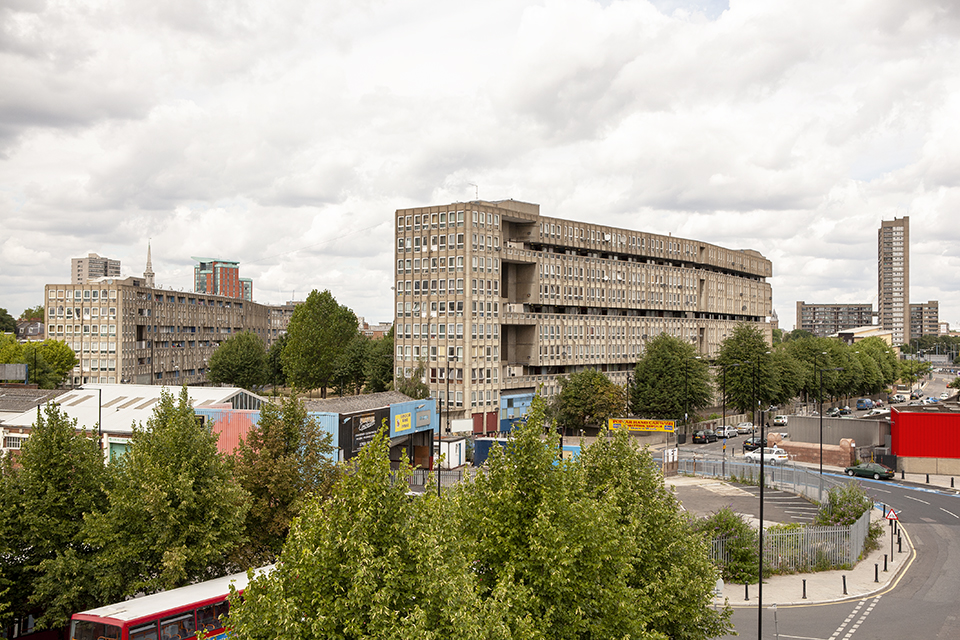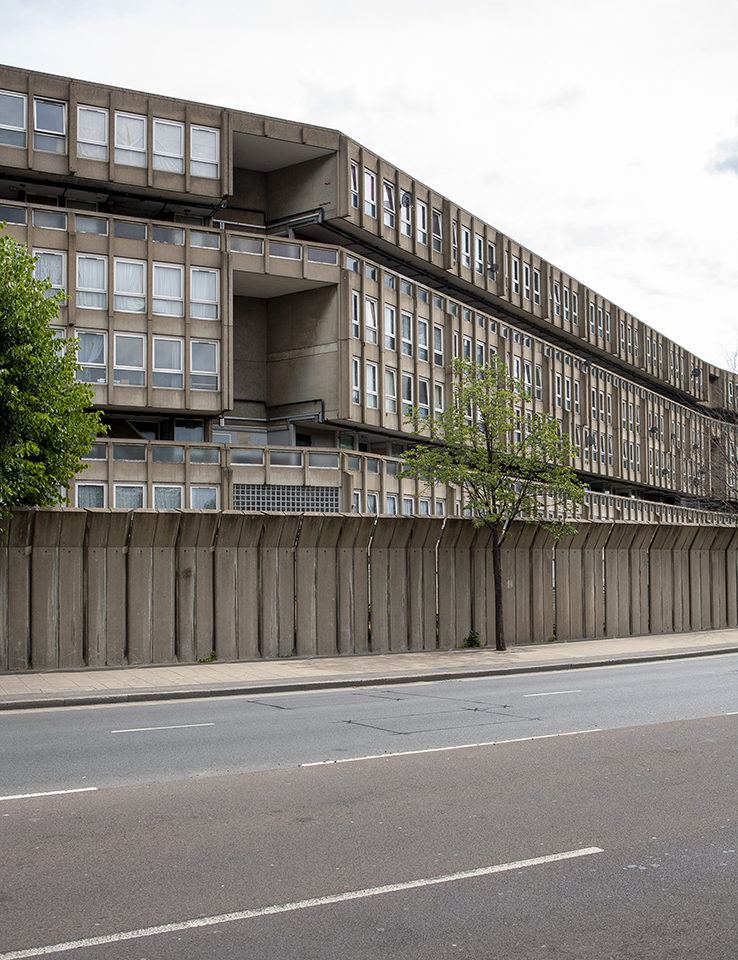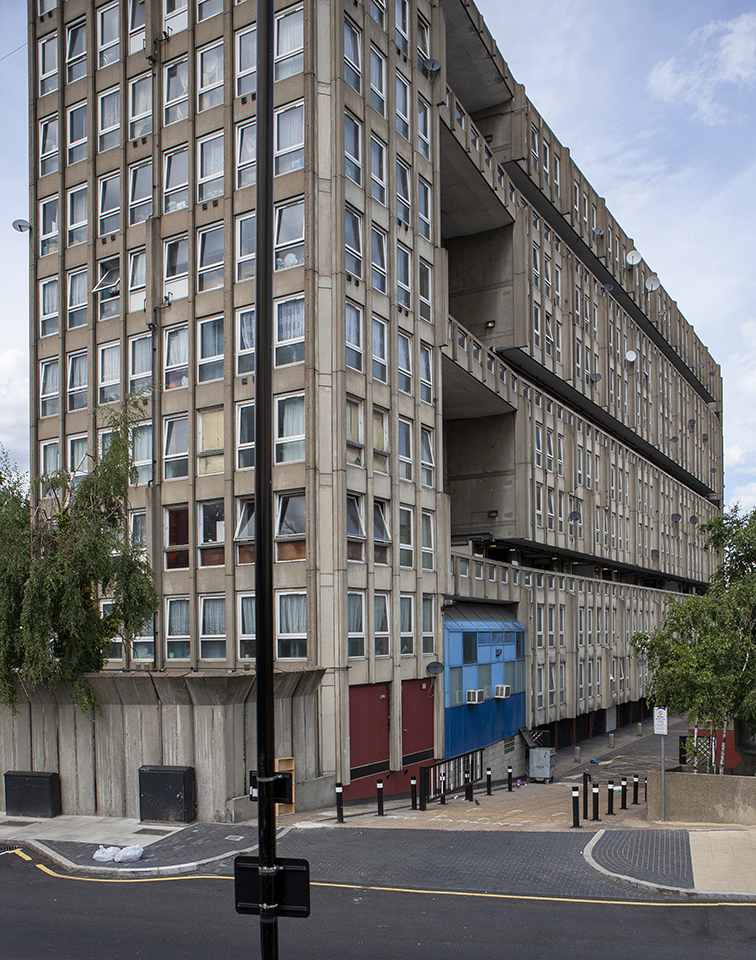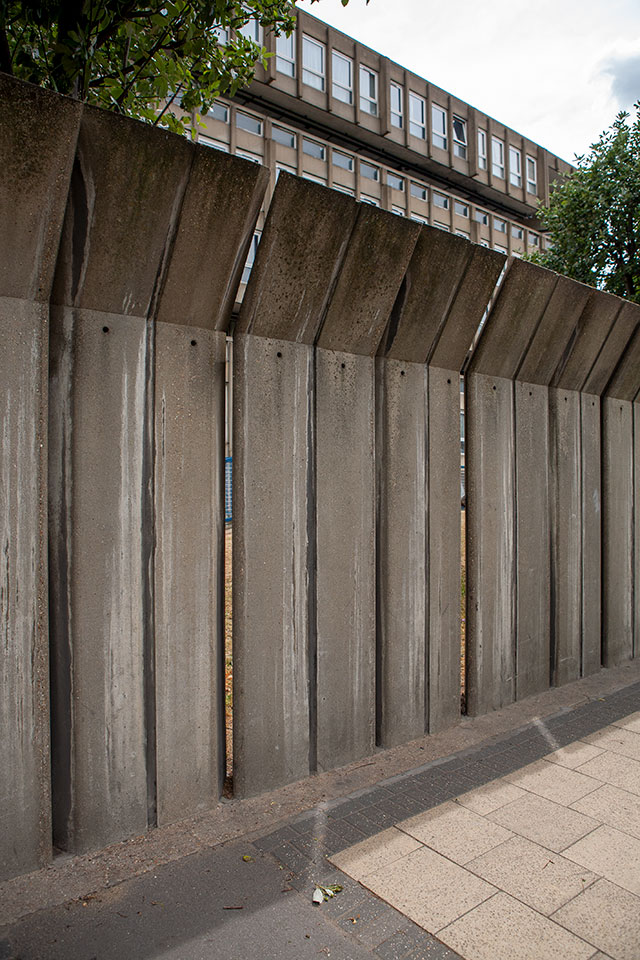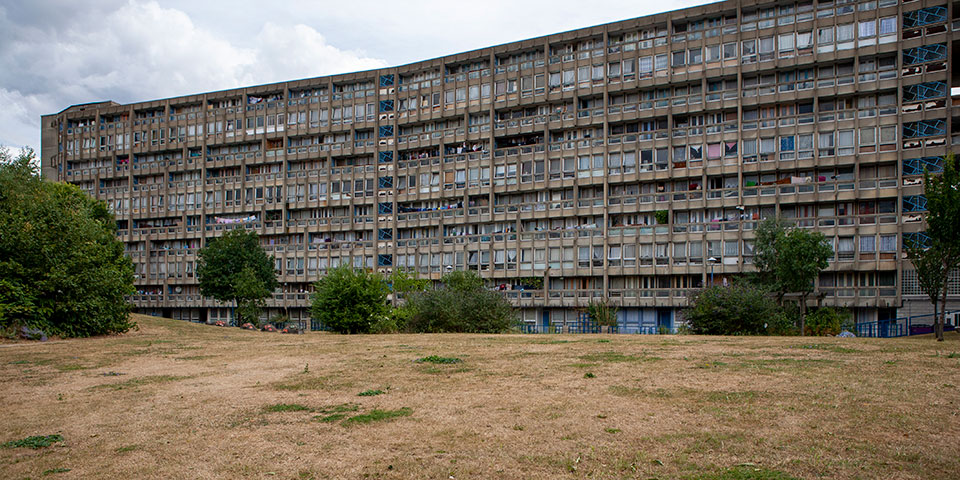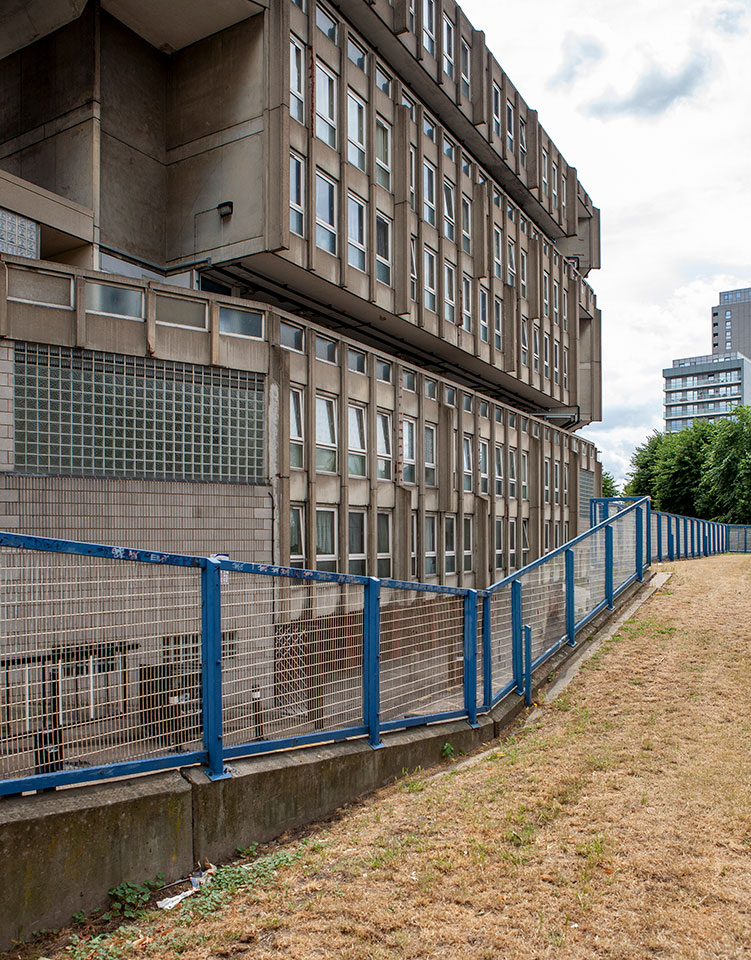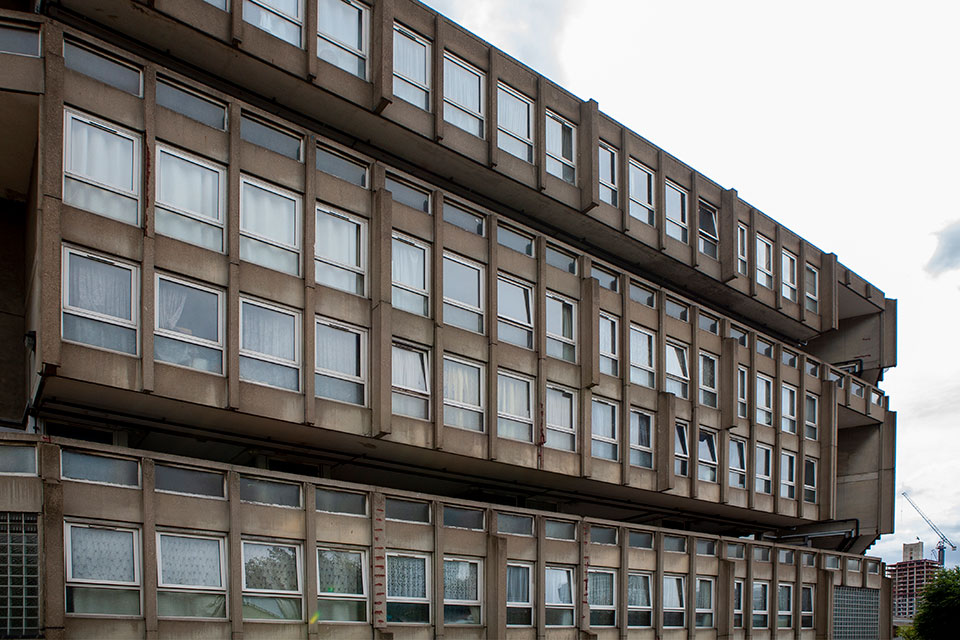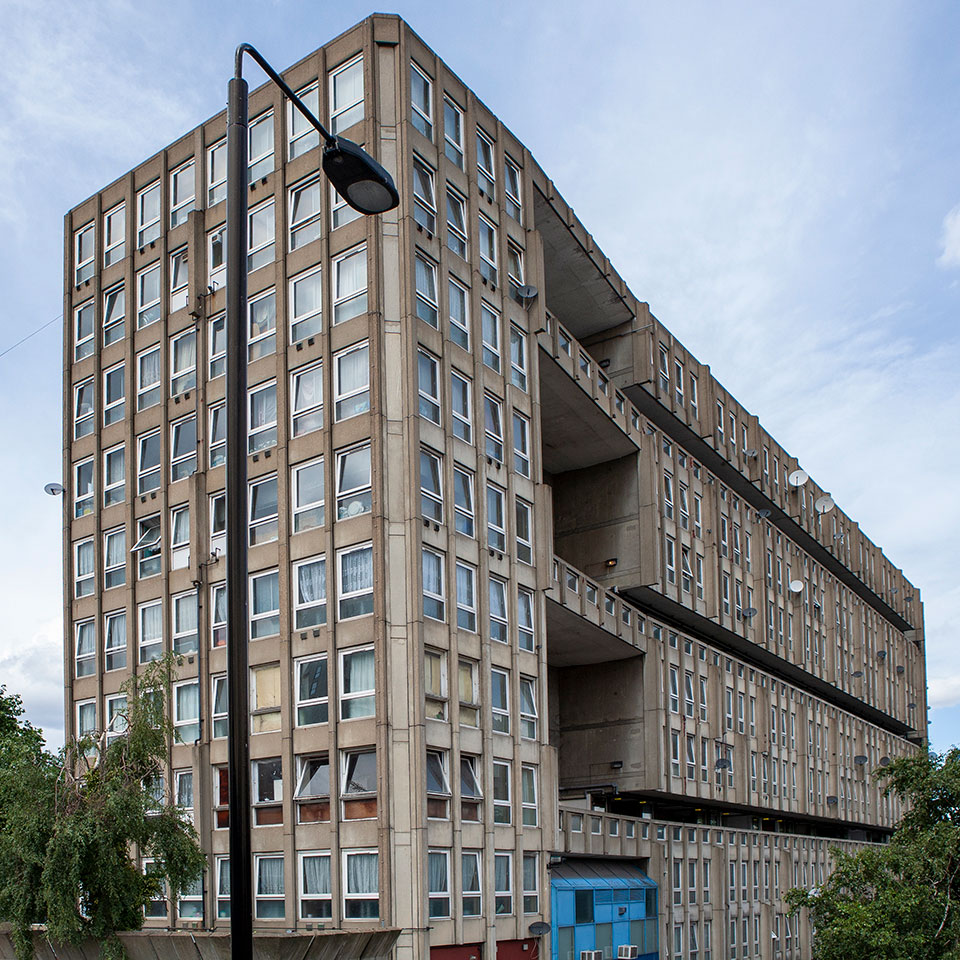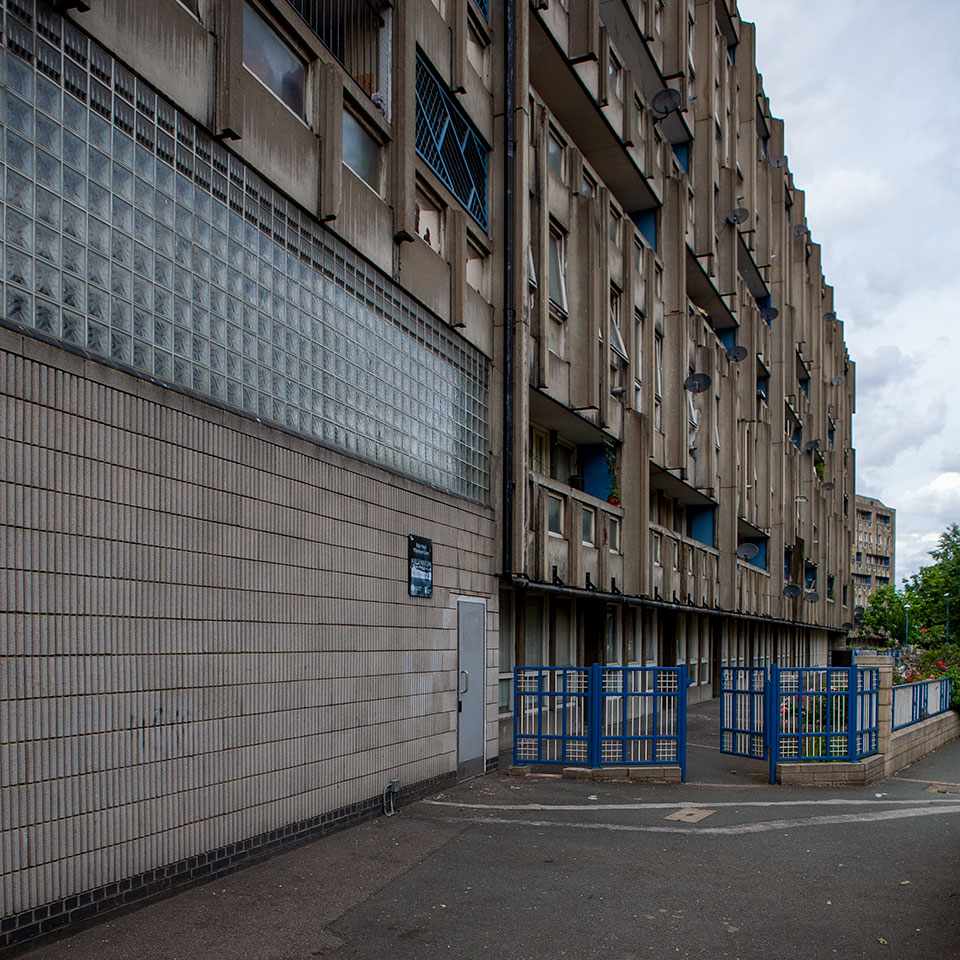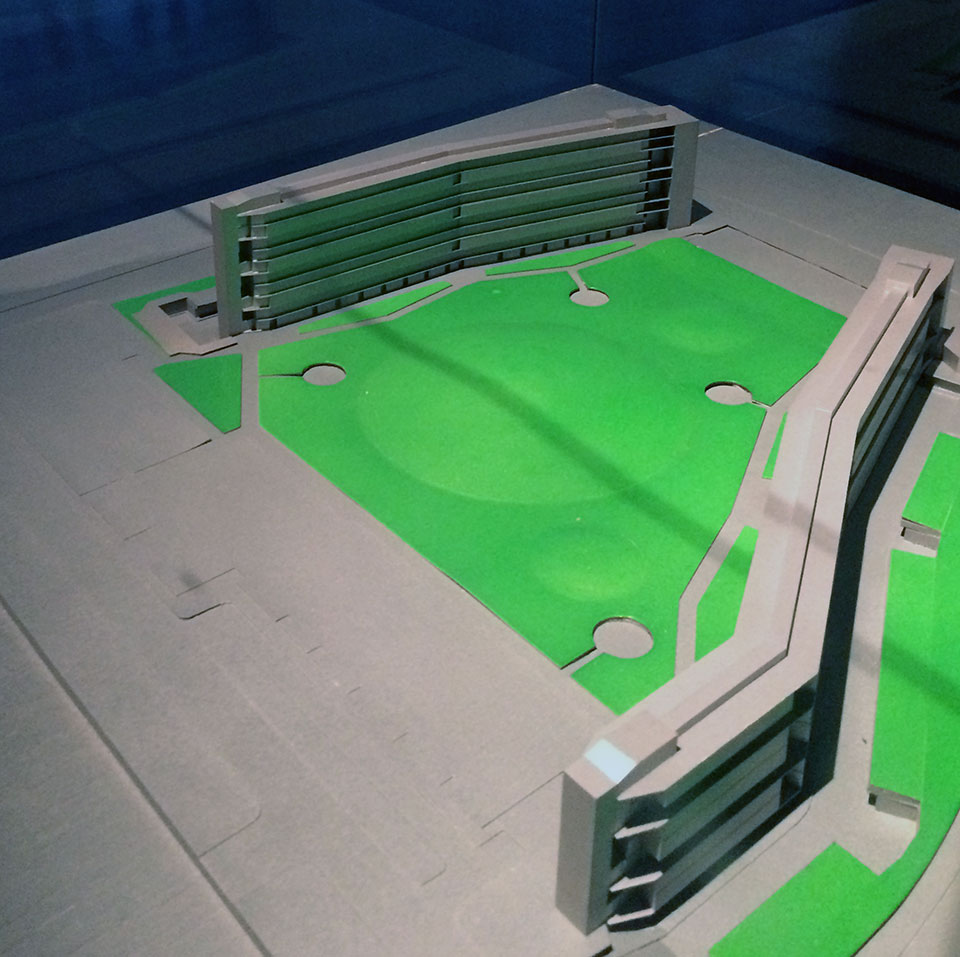Robin Hood Gardens
1972
Contested since its inception, Robin Hood Gardens, now consigned to history by its reduction to rubble, was considered by many to be an idea about a building, rather than a building in its own right. Smithson acolytes were up in arms over its demolition but few residents spoke in its favour. Of course, like many mass social housing schemes of the mid-century, this too suffered from years of wanton neglect, a lack of management and care for shared spaces and the derisory view imparted on such dwellings by a conservative drive for private home ownership. The Smithsons were hardly gifted the perfect site for the application of their theories on the structures of living - to the east was the mouth of the Blackwall Tunnel, to the west was Cotton Street, a dual carriageway and, to the north, the East India Dock Road. The architects’ response to this was the creation of two linear blocks cranked in plan and inward facing to a landscape characterised by its small grassy mounds that invited imaginative play and were overlooked by balconies and walkways. The hard angles of the blocks contrasted with the soft green curves of the landscape. It was undoubtedly brutal in its appearance thanks to an extensive use of concrete, but apparently pleasing in terms of the accommodation and external space – a sentiment shared by its inhabitants when interviewed for BD in 1973 [1]. The Smithsons designed alcoves to the doorways of dwellings to allow residents to personalise with ‘potted plants, flower boxes – the normal paraphernalia of domestic outside show’ [2]. Scholarly debates around the genesis of the scheme and its relationship to the Smithsons much lauded entry to the Golden Lane competition of 1951-52 perpetually rotate around whether it was a late attempt at an already failed dream or was otherwise associated with its specific urban context, forming a territorial enclave to a changing city. Its completion in the same year as ‘modern architecture died’ has not gone unnoticed either, yet Robin Hood Gardens retains a fascination largely underwritten by the substantial role that Alison and Peter Smithson played in global discourse through CIAM and Team 10 and their considerable quantity of published writings. It was the largest built scheme of the Smithsons by some way – this, and its geographic location placed it under a scrutiny reserved for a particular group of buildings. Other mass housing schemes of the period, such as Park Hill, are as important to architectural history yet much less discussed with regard their ideological and critical context. Regardless of how Robin Hood Gardens met its end, it was not a utopia, nor necessarily a successful generator of community as was intended. Its place in architectural history was already assured before news of its prospective demolition rallied concerned parties to its cause. Its pending demise generated an array of creative responses alongside campaigning to save it from the wrecking ball including a monumental video work by Do Ho Suh, presented at the V&A Museum and elsewhere. The V&A also procured a physical fragment of the building, subsequently exhibited at the Venice Bienalle, but were criticised for failing to get behind a 2008 campaign to have the buildings listed.
[1] Building Design, 14 September 1973, pp.20-21
[2] Architectural Design, September 1972
